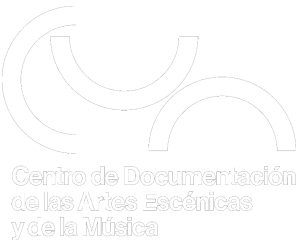Music Representation and Ideology in the Paintings of Francisco de Goya and His Contemporaries
Detalles de publicación: New York: Research Center for Music Iconography RCMI, 2009Tema(s): Iconografía musicalResumen: RESUMEN: Many works by Francisco de Goya (1746-1828) and his contemporaries played an important role in the elaboration of visual models corresponding to the enlightened ideals. Those paintings and engravings, nevertheless, were not meant for the common people, but aimed to fulfill the expectations of the new middle-class art lovers. The music does not escape this process: festivals and popular dances were frequently represented, following the patterns of the enlightened despotism and reflecting an often exaggerated theatricality. The new middle-class was involved in the boom of different genders of theater music, above all the tonadilla escenica. The tonadilla assimilated popular elements of dance and music like the seguidilla and the bolero, among others, that did also appear represented in the paintings and engravings. Those models were common to the plastic and the scenic arts. The analysis of the depicted dances and songs, of the characters, and the pictorial composition has been carried out with attention to their relations with fashion, customs, and with the contemporary musical scene. This process clarifies the ideological environment of eighteenth-century Spain and the political ideas that caused this stylizing and interpretation of the reality.| Tipo de ítem | Biblioteca de origen | Colección | Ubicación en estantería | Signatura | Info Vol | Estado | Fecha de vencimiento | Código de barras | Reserva de ítems |
|---|---|---|---|---|---|---|---|---|---|
| Prensa y revistas | CDAEM | Publicaciones periódicas Música | Retiro | PP Music in Art | 2009. Nº 1-2 | Consulta en sala | 0025353237563 |
RESUMEN: Many works by Francisco de Goya (1746-1828) and his contemporaries played an important role in the elaboration of visual models corresponding to the enlightened ideals. Those paintings and engravings, nevertheless, were not meant for the common people, but aimed to fulfill the expectations of the new middle-class art lovers. The music does not escape this process: festivals and popular dances were frequently represented, following the patterns of the enlightened despotism and reflecting an often exaggerated theatricality. The new middle-class was involved in the boom of different genders of theater music, above all the tonadilla escenica. The tonadilla assimilated popular elements of dance and music like the seguidilla and the bolero, among others, that did also appear represented in the paintings and engravings. Those models were common to the plastic and the scenic arts. The analysis of the depicted dances and songs, of the characters, and the pictorial composition has been carried out with attention to their relations with fashion, customs, and with the contemporary musical scene. This process clarifies the ideological environment of eighteenth-century Spain and the political ideas that caused this stylizing and interpretation of the reality.



